The school visit: what to look for, what to ask
by: The GreatSchools Editorial Team | Updated: December 5, 2023
Print article
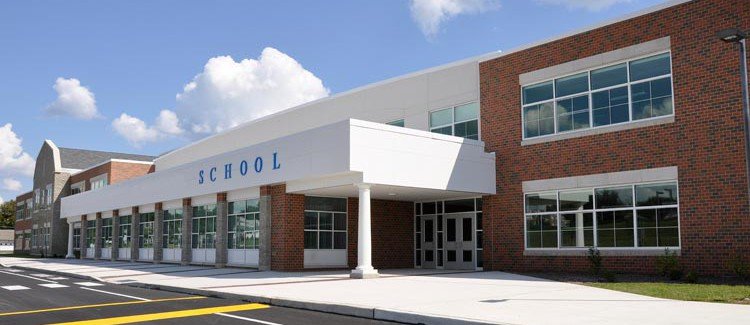
Be sure to visit all the schools on your list, if you can. A visit is the best way to determine whether a school is right for your child. Even a short visit will help you identify a school’s strengths and challenges. It’s also the only way to get a feel for a school’s climate — intangible but important factors like the dynamism of the teaching, engagement of the students, quality of communication, level of respect between students, teachers, administrators, and parents, and the overall sense that the school offers a safe and inspiring learning environment .

School visit checklists
Use this printable guide to help you plan your elementary, middle, or high school visit.
Before your visit
- Do your homework. Read about the schools you’ll be visiting. Examine their school profiles on GreatSchools.org. Talk to other parents and check your local newspaper for articles about the schools.
- Contact the school. Most schools conduct regular school tours and open houses during the enrollment season — typically in the fall. Call the school or go online to schedule a visit.
- Ask and observe. Jot down your questions before your visit (the sample questions below will help you create your list).
Key questions to ask
- Does this school have a particular educational philosophy or mission?
- What curriculum does the school use for math, reading, science, etc? Ask if the school follows the Common Core State Standards , Next Generation Science Standards , and which program(s) are they using to teach children to read ?
- What is the average class size ?
- What is this school’s approach to student discipline and safety? Do they practice restorative justice ? Are the discipline practices fair for families of color ? Do they practice corporal punishment , and if so, can you opt out of that for your child?
- How much homework do students have? What is the school’s philosophy/approach to homework ?
- What kind of library resources are available to students?
- How is technology used to support teaching and learning at this school?
- How do the arts fit into the curriculum? Is there a school choir, band or orchestra? A drama program? Art classes?
- What extracurricular opportunities (sports, clubs, community service, competitions) are available for students?
- How do students get to school? Is free school busing available?
- Is bullying a problem at the school? Does the school have an anti-bullying policy ?
- Does the school have a program for gifted students ?
- How does this school support students who have academic, social or emotional difficulties?
- What strategies are used to teach students who are not fluent in English?
- What professional development opportunities do teachers have ? In what ways do teachers collaborate?
- Does the school offer Physical Education (PE) classes?
- What are some of the school’s greatest accomplishments? What are some of the biggest challenges this school faces?
Features to look for
- Do classrooms look cheerful? Is student work displayed, and does it seem appropriate for the grade level?
- Do teachers seem enthusiastic and knowledgeable, asking questions that stimulate students and keep them engaged?
- Does the principal seem confident and interested in interacting with students, teachers and parents?
- How do students behave as they move from class to class or play outside?
- Is there an active Parent Teacher Association (PTA) ? What other types of parent involvement take place at this school?
- How well are the facilities maintained? Are bathrooms clean and well supplied, and do the grounds look safe and inviting?
Especially for elementary schools
- What are some highlights of this school’s curriculum in reading , math, science and social studies?
- What criteria are used to determine student placement in classes?
- How does this school keep parents informed of school information and activities? Are they easy to communicate with ?
- Does the school let parents know what their rights are (and aren’t ) in regards to your child’s education?
- Is quality child care available before and after school?
- How much outdoor time do kids get each day?
Especially for middle schools
- How does the school guide and prepare students for major academic decisions that will define their options in high school and beyond? Do they provide advice to parents on how to help this age group ?
- Does the school offer tutoring or other support if students need extra help?
- Are world language classes (French, Spanish, etc.) offered to students?
- If the school is large, does it make an effort to provide activities that create a sense of community ?
Especially for high schools
- Does this school have a particular curriculum focus, such as STEM (Science, Technology, Engineering, and Math) or the arts?
- What kind of emphasis does the school place on college preparation ?
- Does the school have a good selection of Advanced Placement (AP) and honors classes?
- What percentage of students take the SAT or/and ACT ?
- Where do students go after they graduate? How many attend four-year college? Are graduates prepared for college ?
- Are counselors available to help students make important decisions about classes?
- Is college counseling and support available?
- Does the school offer a variety of career planning options for students who are not college bound?
- Does the school staff set high expectations for all students?
- Does the school have a tutoring program so students can get extra help if they need it?
- How do students get to school? Is there a parking lot, and are buses (public or district-provided) available?
- Does this school have any school-to-work programs or specialized academies ?
- What is the school drop-out rate ?
Especially for charter schools
- When and why was this school created ?
- Does the school have a specific focus?
- Who is the charter holder, or the group that created the school?
- How does the school select teachers? Are the teachers certificated?
- Is this the permanent location or facility for the school? If not, will the school be moving to another location in the near future?

Homes Nearby
Homes for rent and sale near schools

Why your neighborhood school closes for good – and what to do when it does

5 things for Black families to consider when choosing a school

6 surprising things insiders look for when assessing a high school
Surprising things about high school
Yes! Sign me up for updates relevant to my child's grade.
Please enter a valid email address
Thank you for signing up!
Server Issue: Please try again later. Sorry for the inconvenience
- PRO Courses Guides New Tech Help Pro Expert Videos About wikiHow Pro Upgrade Sign In
- EDIT Edit this Article
- EXPLORE Tech Help Pro About Us Random Article Quizzes Request a New Article Community Dashboard This Or That Game Popular Categories Arts and Entertainment Artwork Books Movies Computers and Electronics Computers Phone Skills Technology Hacks Health Men's Health Mental Health Women's Health Relationships Dating Love Relationship Issues Hobbies and Crafts Crafts Drawing Games Education & Communication Communication Skills Personal Development Studying Personal Care and Style Fashion Hair Care Personal Hygiene Youth Personal Care School Stuff Dating All Categories Arts and Entertainment Finance and Business Home and Garden Relationship Quizzes Cars & Other Vehicles Food and Entertaining Personal Care and Style Sports and Fitness Computers and Electronics Health Pets and Animals Travel Education & Communication Hobbies and Crafts Philosophy and Religion Work World Family Life Holidays and Traditions Relationships Youth
- Browse Articles
- Learn Something New
- Quizzes Hot
- This Or That Game
- Train Your Brain
- Explore More
- Support wikiHow
- About wikiHow
- Log in / Sign up
- Education and Communications
- Official Writing
- Report Writing
How to Write a Visit Report
Last Updated: March 30, 2024 References
This article was co-authored by Madison Boehm . Madison Boehm is a Business Advisor and the Co-Founder of Jaxson Maximus, a men’s salon and custom clothiers based in southern Florida. She specializes in business development, operations, and finance. Additionally, she has experience in the salon, clothing, and retail sectors. Madison holds a BBA in Entrepreneurship and Marketing from The University of Houston. This article has been viewed 668,680 times.
Whether you’re a student or a professional, a visit report helps you document the procedures and processes at an industrial or corporate location. These reports are fairly straightforward. Describe the site first and explain what you did while you were there. If required, reflect on what you learned during your visit. No additional research or information is needed.
Writing a Visit Report
Explain the site's purpose, operations, and what happened during the visit. Identify the site's strengths and weaknesses, along with your recommendations for improvement. Include relevant photos or diagrams to supplement your report.
Describing the Site

- Reports are usually only 2-3 pages long, but in some cases, these reports may be much longer.
- In some cases, you may be asked to give recommendations or opinions about the site. In other cases, you will be asked only to describe the site.
- Ask your boss or instructor for models of other visit reports. If you can't get a model, look up samples online.

- If you visited a factory, explain what it is producing and what equipment it uses.
- If you visited a construction site, describe what is being constructed and how far along the construction is. You should also describe the terrain of the site and the layout.
- If you’re visiting a business, describe what the business does. State which department or part of the business you visited.
- If you’re visiting a school, identify which grades they teach. Note how many students attend the school. Name the teachers whose classes you observed.

- Who did you talk to? What did they tell you?
- What did you see at the site?
- What events took place? Did you attend a seminar, Q&A session, or interview?
- Did you see any demonstrations of equipment or techniques?

- For example, at a car factory, describe whether the cars are made by robots or humans. Describe each step of the assembly line.
- If you're visiting a business, talk about different departments within the business. Describe their corporate structure and identify what programs they use to conduct their business.
Reflecting on Your Visit

- Is there something you didn’t realize before that you learned while at the site?
- Who at the site provided helpful information?
- What was your favorite part of the visit and why?

- For example, you might state that the factory uses the latest technology but point out that employees need more training to work with the new equipment.
- If there was anything important left out of the visit, state what it was. For example, maybe you were hoping to see the main factory floor or to talk to the manager.

- Tailor your recommendations to the organization or institution that owns the site. What is practical and reasonable for them to do to improve their site?
- Be specific. Don’t just say they need to improve infrastructure. State what type of equipment they need or give advice on how to improve employee morale.
Formatting Your Report

- If you are following a certain style guideline, like APA or Chicago style, make sure to format the title page according to the rules of the handbook.

- Don’t just say “the visit was interesting” or “I was bored.” Be specific when describing what you learned or saw.

Sample Visit Report

Community Q&A
You Might Also Like

- ↑ http://services.unimelb.edu.au/__data/assets/pdf_file/0010/471286/Site_Reports_for_Engineers_Update_051112.pdf
- ↑ https://www.examples.com/business/visit-report.html
- ↑ https://www.thepensters.com/blog/industrial-visit-report-writing/
- ↑ https://eclass.aueb.gr/modules/document/file.php/ME342/Report%20Drafting.pdf
About This Article

To write a visit report, start by including a general introduction that tells your audience where and when you visited, who your contact was, and how you got there. Once you have the introduction written out, take 1 to 2 paragraphs to describe the purpose of the site you visited, including details like the size and layout. If you visited a business, talk about what the business does and describe any specific departments you went to. Then, summarize what happened during your visit in chronological order. Make sure to include people you met and what they told you. Toward the end of your report, reflect on your visit by identifying any strengths and weaknesses in how the site operates and provide any recommendations for improvement. For more help, including how to format your report, read on! Did this summary help you? Yes No
- Send fan mail to authors
Reader Success Stories
Betty Tarutia
Jul 9, 2020
Did this article help you?

Jayani Rathnayake
Aug 6, 2019
Jun 13, 2019
Atremedaki Phawa
Aug 19, 2019

Featured Articles

Trending Articles

Watch Articles

- Terms of Use
- Privacy Policy
- Do Not Sell or Share My Info
- Not Selling Info
wikiHow Tech Help Pro:
Develop the tech skills you need for work and life
- Business Templates
- School Samples
FREE 11+ Sample School Visit Report Templates in MS Word | Google Docs | Pages | PDF
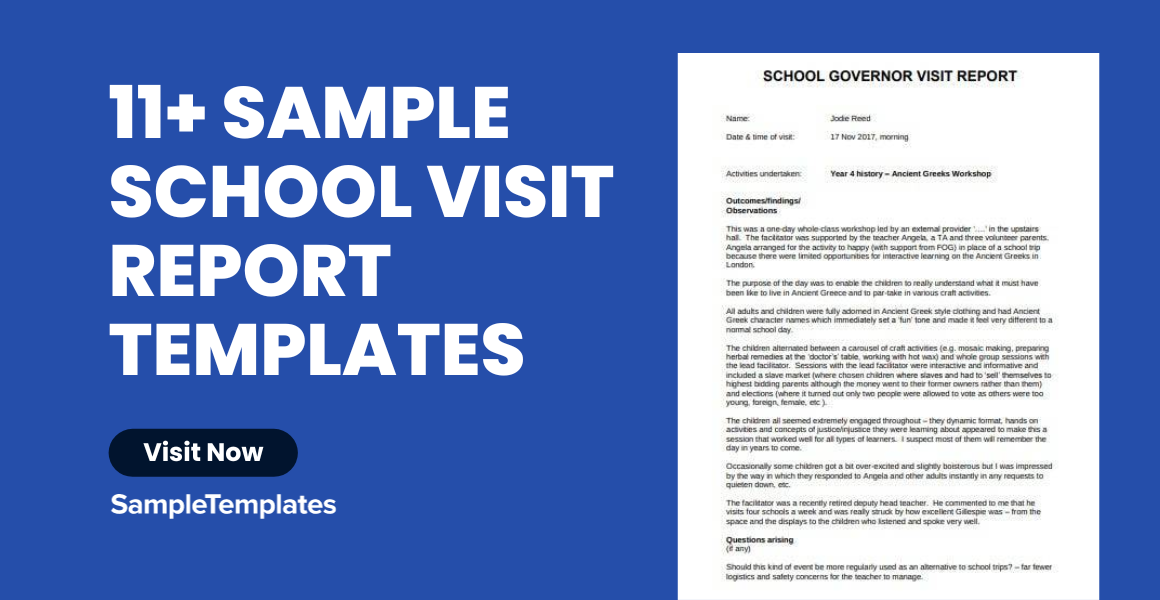
Jean Piaget said: “The goal of education is not to increase the amount of knowledge but to create the possibilities for a child to invent and discover, to create men who are capable of doing new things.“ A good education can be seen if a certain school can mold the students into the better versions of themselves. But how can someone know if a school can provide the needs of the students and help them grow intellectually? In this article, we are glad to help you have insight for your success by using our guide and downloadable visit report samples when you are going to a certain school branch or project site. Keep on reading!
School Visit Report
Free 11+ school visit report samples, 1. school visit report template, 2. pre school site visit report template, 3. primary school visit report template, 4. governor school visit report form template, what is a school visit report, 5. school visit development report template, 6. basic school improvement visit report template, 7. science school visit report example, 8. district support visit report template, 9. sample school governor visit report template, how to write a school visit report , 1. define your goals, 2. interact with other teachers, 4. collect some valuable information from resources, 10. formal school visit report template, 11. school faculty visit report template, 12. printable school visit report template, why school visit report are important, what is the importance of a school visit, what are the significant steps to take in a school visit, what is a visit report, how do you evaluate a school, who conducts school visit reports, how often are school visit reports conducted, what role do school visit reports play in accreditation.

- Google Docs
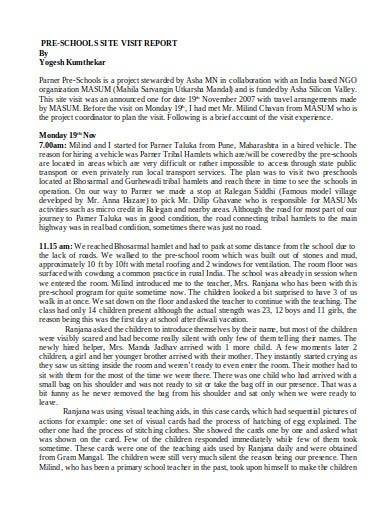
Size: 432 KB
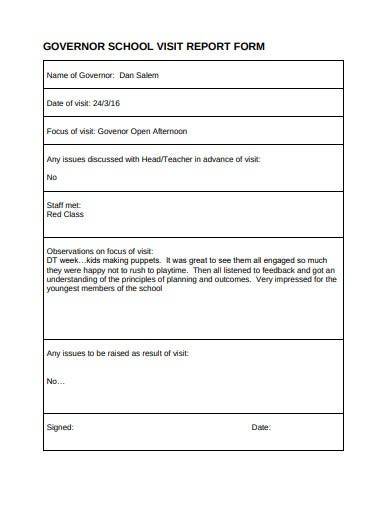
Size: 95 KB
A school visit report is a detailed report consisting of some information about the visit in the school, mainly about the present conditions of the teachers, instructors, school facilities, students, classrooms, school equipment, and other things. This sample report also shows if a school is really effective in terms of providing the needs of the students in attaining proper education. Additionally, teachers can also learn from one another when they visit different schools.
A School Visit Report is a comprehensive document that outlines the observations, findings, and sample recommendations resulting from a visit to an educational institution. This report is typically generated by individuals, such as education officials, inspectors, or administrators, who conduct on-site visits to schools. The purpose of the report is to assess various aspects of the school’s functioning, identify strengths and areas for improvement, and provide valuable feedback to enhance the overall educational environment.
Key Components of a School Visit Report:
- Sample Brief overview of the purpose and context of the visit.
- Background information about the school, including its name, location, and any relevant details.
- Clearly defined objectives or goals for the visit, such as evaluating teaching methods, assessing infrastructure, or reviewing administrative processes.
- Examination of the physical facilities, including classrooms, laboratories, libraries, and recreational areas.
- Assessment of the overall cleanliness, maintenance, and safety measures in place.
- Evaluation of teaching methods, curriculum implementation, and the use of educational technology.
- Observations on classroom dynamics, student engagement, and teacher-student interactions.
- Sample Analysis of academic performance, examination results, and any available student achievement data.
- Identification of trends or patterns in student outcomes.
- Assessment of teacher qualifications, professional development opportunities, and adherence to educational standards.
- Recognition of outstanding contributions by faculty members.
- Review of administrative systems, including enrollment procedures, record-keeping, and communication channels.
- Examination of financial management practices and budget utilization.
- Overview of extracurricular sample programs, sports, cultural activities, and student clubs.
- Evaluation of the school’s efforts to promote holistic development.
- Assessment of parent-teacher communication and involvement.
- Exploration of partnerships with the local community and efforts to foster positive relationships.
- Identification of challenges or areas that require improvement.
- Concrete recommendations for addressing identified issues and enhancing overall school performance.
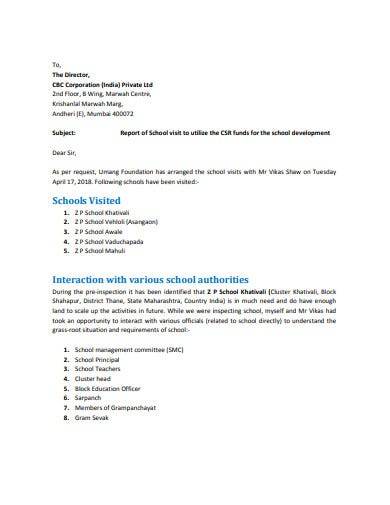
Size: 294 KB

Size: 308 KB

Size: 113 KB
School visits are essential for many teachers and educators to gain knowledge about a particular school they are visiting, observing how teachers there are facilitating student learning, and getting informed by the school administrators about their role in establishing a productive learning area for the students. In this section, we provide some helpful tips that you should think consciously in writing your report format :
First of all, you need to define your goals while visiting a school. What are the unique points in this particular school, as well as the teachers, instructors, school faculty, and students? What do you want to learn from visiting this school? How can the experience in the school visit help you in enhancing your teaching methods? Consider these questions when you think about your goals statement for your report.
Try your best in interacting and being up close with other teachers and educational facilitators through classroom visits, panel discussions, or sitting in on teacher sample planning meetings. Know about their experiences in teaching and learn from them. So, you must concentrate even more on learning about the policies and processes at the teacher and administrator level. Plus, figure out how you can implement helpful policies or cancel policies at your school that are not effective.
3. Talk with the students
Also, you can talk with some students report of the school you’re visiting through the guided school tours and class visits. Hear their thoughts and opinions about their experience in studying and how the school helped them in general.
Then, you need to collect valuable information of your school visit from the resources given to you. Usually, schools and academies provide the visitors some panelist presentations and information on the school site in the sample forms of brochures.
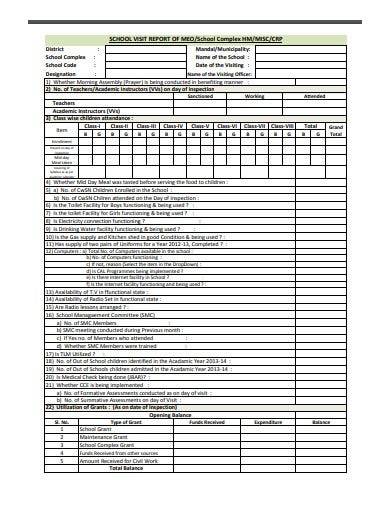
Size: 38 KB
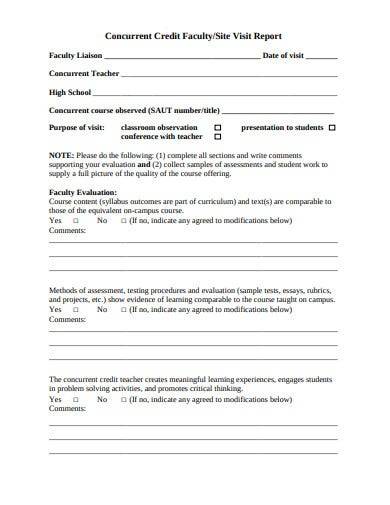
Size: 75 KB
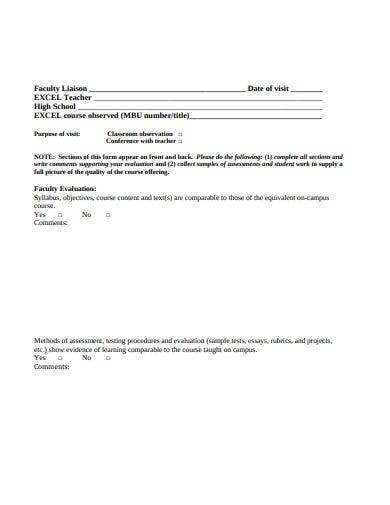
Size: 300 KB
Importance of School Visit Reports:
- School visit reports serve as a mechanism for quality assurance in education.
- They help education authorities and stakeholders ensure that schools adhere to prescribed standards and guidelines.
- Through on-site observations, reports highlight both the strengths and weaknesses of a school.
- This information aids in acknowledging and reinforcing positive practices while addressing areas that need improvement.
- School visit reports focus on various aspects of the educational process, from teaching methods to infrastructure.
- Recommendations provided in the reports contribute to enhancing the overall quality of education, leading to improved academic outcomes.
- Education authorities can use the insights gained from visit reports to develop strategic plans for school improvement.
- The reports guide the allocation of resources, implementation of targeted interventions, and setting of educational priorities.
- Reports often include sample assessments of teacher qualifications and teaching methodologies.
- This information can inform decisions related to teacher training and professional development programs, ensuring that educators are equipped with the necessary skills.
- School visit reports promote accountability among educational institutions.
- By making these reports publicly available, transparency is increased, fostering trust among parents, community members, and other stakeholders.
- Education policies and initiatives can be evaluated based on the findings and recommendations of school visit reports.
- This sample evaluation informs policymakers about the effectiveness of existing measures and guides the development of new policies.
- School visit reports often include information on parent and community engagement.
- This engagement is crucial for creating a collaborative educational environment, and reports guide efforts to strengthen these partnerships.
- The cyclical nature of school visits and reports supports a culture of continuous improvement.
- Schools can use the sample feedback provided in previous reports to track progress, implement changes, and strive for ongoing excellence.
- Ensures that schools comply with legal and regulatory requirements.
- Helps identify any issues that may lead to non-compliance and provides recommendations for corrective actions.
- Emphasizes the impact of educational practices on students.
- Encourages schools to adopt student-centric approaches that prioritize the well-being and academic success of students.
A school visit is important for teachers and educators to increase connections to one another and have a valuable learning experience.
Identify a specific goal or purpose. Communicate with the principal and department heads of the school. Hold a short planning meeting schedule prior to the visit. Set up a detailed visit schedule. Then, take some important notes of the school visit and have a follow-up talk along with the teachers and other educators.
A visit report provides an overall summary report or overview of a site visit for business development.
Make an analysis essay about the teaching and learning styles of the teachers and students, and experience the culture and environment there. If you can’t visit, try to search for a few students and parents who can provide you their personal experiences with the school.
School Visit Reports are typically conducted by education authorities, inspectors, or accreditation bodies responsible for evaluating the performance and compliance of schools.
The frequency of School Visit Reports varies, but they are often conducted periodically as part of quality assurance measures. The interval may depend on regional regulations or accreditation requirements
School Visit Reports play a crucial role in the accreditation process. Accreditation bodies often use these reports to determine whether a school meets the established standards and criteria for accreditation.
Therefore, teachers and educators can have a meaningful and transformative learning experience when they participate in school visits. If you are a teacher, you will be delighted to visit a school especially to award-winning and elite universities and educational institutions. So, creating a sample report from your school visits can be helpful in getting some knowledge about different learning environments and students. To help you with your report, we have included several report samples that you can use.
In conclusion, a School Visit Report serves as a vital tool in evaluating and enhancing the educational landscape. Through meticulous assessments and recommendations, it contributes to the ongoing journey of educational institutions towards excellence, fostering continuous improvement and ensuring a high standard of quality in the realm of education.
Related Posts
Free 11+ sample inspection reports in google docs ms word ..., free 8+ sample book report templates in google docs ms word ..., free 8+ weekly report samples in pdf ms word, free 9+ visitors log templates in pdf ms word, free 20+ sample school calendar templates in ms word pdf ..., free 8+ sample medical reports in pdf ms word, free 25+ sample trip reports in ms word pdf | google docs ..., free 12+ sample school sign in sheet templates in pdf, free 9+ stock audit report samples & templates in pdf ms word, free 7+ sample appointment slip templates in pdf ms word, free 9+ sample manufacturing project reports in pdf ms word ..., free 8+ sample acknowledgment report templates in ms word ..., free 8+ sample competitor analysis reports in pdf ms word ..., free 11+ laboratory audit report samples & templates in pdf ..., free 9+ sample report request forms in ms word pdf, free 7+ sample biography report templates in pdf ms word ..., free 10+ report worksheet samples and templates in pdf ms ..., free 10+ sample valuation reports in pdf, free 9+ annual report samples in pdf ms word.
Publications
On-demand strategy, speaking & workshops, latest articles, write for us, library/publications.
- Competency-Based Education
- Early Learning
- Equity & Access
- Personalized Learning
- Place-Based Education
- Post-Secondary
- Project-Based Learning
- SEL & Mindset
- STEM & Maker
- The Future of Tech and Work

Shane Doyle on Place and Story
Chris coxon and ryan franklin on educate texas, dr. gholdy muhammad on finding and nurturing joy in education, melissa byrne on connecting a learner profile to pathways and postsecondary workforce readiness, recent releases.
Health Science Pathways Guide
New Pathways Handbook: Getting Started with Pathways
Unfulfilled Promise: The Forty-Year Shift from Print to Digital and Why It Failed to Transform Learning
The Portrait Model: Building Coherence in School and System Redesign
Green Pathways: New Jobs Mean New Skills and New Pathways
Support & Guidance For All New Pathways Journeys
Unbundled: Designing Personalized Pathways for Every Learner
Credentialed Learning for All
AI in Education
For more, see Publications | Books | Toolkits
Microschools
New learning models, tools, and strategies have made it easier to open small, nimble schooling models.
Green Schools
The climate crisis is the most complex challenge mankind has ever faced . We’re covering what edleaders and educators can do about it.
Difference Making
Focusing on how making a difference has emerged as one of the most powerful learning experiences.
New Pathways
This campaign will serve as a road map to the new architecture for American schools. Pathways to citizenship, employment, economic mobility, and a purpose-driven life.
Web3 has the potential to rebuild the internet towards more equitable access and ownership of information, meaning dramatic improvements for learners.
Schools Worth Visiting
We share stories that highlight best practices, lessons learned and next-gen teaching practice.
View more series…
About Getting Smart
Getting smart collective, impact update, the power of visiting schools – how to plan your next visit.
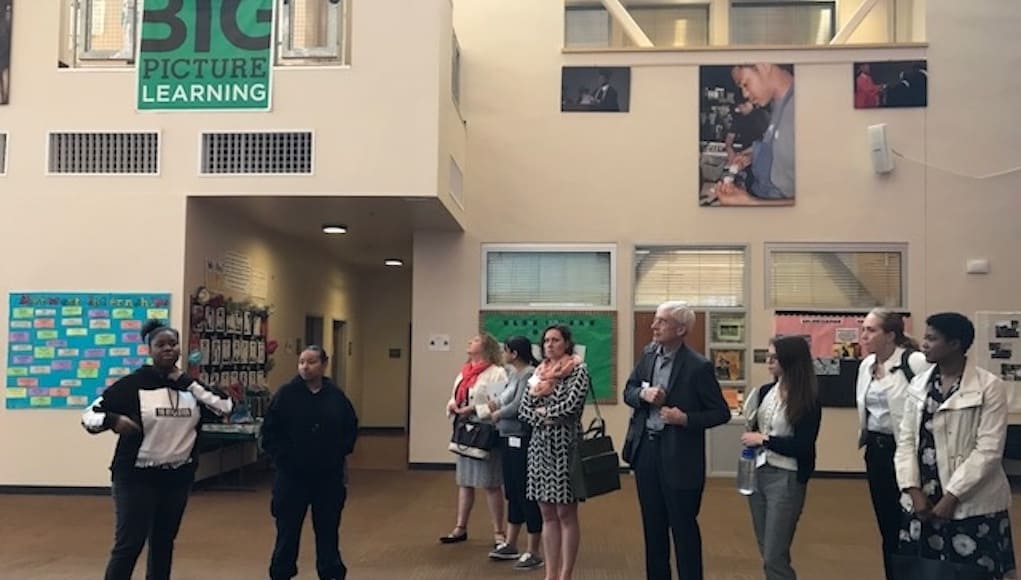
One of the best ways to see deeper learning in action is to visit schools. For many policymakers and educators, these visits are transformative, offering them an opportunity to be escorted through the school environment by student guides, visit classrooms, see teachers facilitating student learning, and talk to administrators about their role in creating an engaging learning space for all. Through schools visits, tour participants gain a greater understanding of why it’s important to help young people prepare for college, career and life not only by academic knowledge, but also by mastering skills such as critical thinking, problem solving and teamwork.
For 25 years, our organization–the American Youth Policy Forum (AYPF)–has been conducting study tours for policymakers, and more specifically for the last seven years the organization has conducted deeper learning study tours, which have been funded by the Hewlett Foundation . Through the tours, small teams of state and federal policy leaders and educators have had the opportunity to see deeper learning in action, with the aim of informing them about what conditions are necessary to provide innovative learning experiences to all students. Ideally, they will then move from contemplating change to taking action. Through conducting these tours and receiving recommendations for improvement from WestEd ’s independent evaluation of them, we’ve learned that they remain valuable vehicles for adult learning. Here are some recommendations for you to consider as you organize your own tours of schools, or participate in these experiences.
Consider your goals
Before organizing a study tour, it’s helpful to think about why you’d want to bring people (be they policymakers, business leaders or educators) along on a tour, and what you expect to happen following the tour. You might consider using a framework similar to the one that WestEd evaluators provided us to help us clarify our tour goals and to think about our theory of action. This framework has four stages for understanding behavior change: precontemplation, contemplation, preparation, and action (this is the Transtheoretical Model of Change ). As we organize tours, our goal is that, having heard from policy leaders and having visited schools, participants will move from contemplating change, to a period of preparation, to taking action. Our purpose with these tours is to promote deeper learning opportunities for all students, so we work towards clarifying what actions policymakers and educators will need to take to accomplish this goal.
Select and Prepare Participants Carefully
Study tours work best when the audience is comprised of people with diverse backgrounds, experiences, and roles. We have typically included representatives from various levels of policy (state and local), from higher education and K-12, from the business community, and from a variety of community organizations. All trip participants receive preparation materials well in advance, including draft agendas and information on the sites they will be visiting. Based on our evaluation’s recommendations, we will spend more time in the future connecting preparatory materials to documents that will be used for reflection on participant learning during the tour. We will also examine ways to conduct pre-trip needs assessments, to help participants better focus their learning. These could include the use of surveys, or a webinar that walks participants through identifying what they most need to learn about.
Provide High-Quality Tours
A high-quality tour includes framing remarks by state- and district-level leaders, site visits to schools, and time for guided reflection and networking. Participants generally appreciate the chance to tour schools, but always want more time to interact with administrators, teachers and students. School visit agendas should maximize this kind of meeting time, offering participants multiple opportunities to engage with the principal (usually at the start and end of the tour), to hear from teachers (through classroom visits, panel discussions, or sitting in on teacher planning meetings), and to interact with students (through guided tours, classroom visits, panel discussions, or shadowing them at their internships). It’s also helpful to hear from students who have graduated from high school, as this provides a window into their experience of how well their high school prepared them for postsecondary options. Having seen deeper learning in action, usually at two school sites, it’s important to provide time and structure for participants to tease out which components of the school models presented they could possibly incorporate into their own work. The evaluation of our tours revealed, unsurprisingly, that our participants want to focus even more on learning about the policies and processes at the teacher and administrator level that enable deeper learning. They also want to figure out how they can implement helpful policies – or quit doing some of the unhelpful ones!
Conduct Follow-Up and Provide Additional Resources!
Following the trip, we provide our participants with resources, including panelist presentations and information on the school sites. Additionally, we mail them a self-addressed postcard on which they have shared the action steps they committed to take, based on what they learned. This activity with the postcards is conducted right at the end of the study tour, and mailing it a few weeks after the trip provides a gentle nudge to action. We are exploring the ideas of conducting follow-up webinars to learn what resources and help participants still need, and possibly even creating toolkits that help them transition from learning on the trip to implementation back at their jobs. Part of this conversation will center on how we help participants tell the story of their experience, as we know they typically share information with colleagues. What story will they tell about deeper learning? About their encounters with students? About the need to provide this kind of engaging, hands-on learning experience to each and every child?
The Learning Journey is an Iterative Process…
Participating in a tour to a school can be a transformative learning experience for attendees – but only if they continue to grapple with issues raised by the tour, and have a dedicated forum for contemplating possible action. Following our tours, participants continue to explore the intersection between deeper learning and career and technical education . They struggle with how to be more effective in providing deeper learning to diverse student populations. How to recruit, train, and provide ongoing professional development for teachers who facilitate deeper learning remains a topic of profound contemplation.
Organizing an effective tour takes time and effort. Going along on a tour requires dedication to one’s craft and a willingness to be open to new experiences. As you think about participating or organizing a tour, remember that these are iterative learning experiences, moving from precontemplation towards action. Just like the students and teachers we are visiting with, we are always on a learning journey–one we should ideally engage in with curiosity, an open mind, and plenty of zest!
For more, see:
- Professional Learning: The Power of School Visits
- 100 Middle & High Schools Worth Visiting
- An Innovative K-8 Human-Centered Approach at Design39
Loretta Goodwin is Deputy Director of the American Youth Policy Forum . Follow her on Twitter: @LearningZest
Stay in-the-know with all things EdTech and innovations in learning by signing up to receive our weekly newsletter, Smart Update .
Guest Author
Discover the latest in learning innovations.
Sign up for our weekly newsletter.
Related Reading
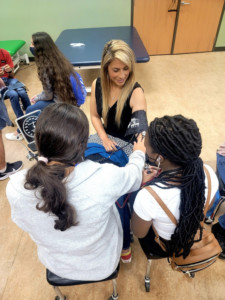
Health Science Pathways
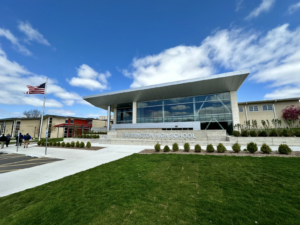
The State of the American High School in 2024

Building the Car While We’re Driving It: Lessons Learned and Back-to-School Priorities in Four Districts
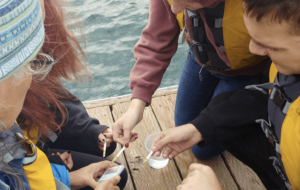
Cool New Schools
Leave a comment.
Your email address will not be published. All fields are required.
Nominate a School, Program or Community
Stay on the cutting edge of learning innovation.
Subscribe to our weekly Smart Update!
Smart Update
What is pbe (spanish), designing microschools download, download quick start guide to implementing place-based education, download quick start guide to place-based professional learning, download what is place-based education and why does it matter, download 20 invention opportunities in learning & development.
Common Principles for Uncommon Schools
- Common Principles
- Year of Demonstration
- CES Centers
- CES Schools and Organizations
- Some Principles for Planning Effective School Visits
1. Build clarity around the purpose of the visit, among your critical friends and among colleagues, parents, and students in your school.
What questions do we have and how will a visit help uncover them?
- What evidence will we ask our critical friends to look for or examine, to enable them to provide relevant feedback?
- What steps should the school take in order to welcome the visitors and value their feedback?
- What written background information will our visitors need? How can we use existing documents-the school’s restructuring plan, for example-to give this information?
2. Structure a visit that gives critical friends access to the information and observations they need to help the school.
- How will we make our visitors comfortable (location of restrooms, bell schedules, a meeting room, a student guide, access to coffee)?
- How will the visitors get to talk to students, teachers, and parents about student work (focus groups, candid interviews, meetings with leadership)?
- Will there be samples of student work to look at? What data and evidence should be available?
- How will the visitors get the “feel” of the school (student shadowing, teacher shadowing, classroom observations)?
- How will we handle lunch (ask visitors to mingle, assign them hosts, arrange focus-group lunches)?
- How and when can the visitors offer ideas about the design of the day’s activities?
3. Structure the feedback process so that as many people as possible can be involved in a non-threatening way.
- Is there a time and a place in the agenda for visitors to discuss with each other what they have seen and talk about the feedback they want to give?
- What will our grouping strategies be (team reports to staff, individuals to small groups, team reports to representatives)?
- What data will we collect from our visitors (charted feedback, personal reflections, notes on the feedback)?
- What will people need to feel safe in the feedback process (ground rules, facilitation, room set-up)?
- Who needs to hear this feedback?
4. Think through the follow-up activities.
- How will this feedback get to a wider audience?
- How will we provide information to the visitors on the value of the visit and the quality of their feedback?
- Will visitors need a room to debrief and plan following the visit?
- How does this visit connect to the other visits the school will host?
Thanks to the Bay Area Coalition of Essential Schools (BayCES) for developing this material.
Horace Volume 14 | 1998, Issue 5
In this volume.
- Among Friends: Norms for Inquiry and Analysis
- Essential Tools in the Trek Toward Change
- How Friends Can Be Critical As Schools Make Essential Changes
- The Other Side of the Fence: A Visiting Team’s Norms for Gathering Evidence
Related Articles
- ‘Design Studios’ Foster Teacher R and D
- Creating a Network of Schools as Critical Friends: The Fifty Schools Project
- Demographics, Regulation, Assessment: Who Teaches? How Well? How Do We Know?
- Elements of a Successful Network
- Readings About Networks
- Regional Centers: A Larger Link, A Stronger Voice
School Visit Experts
Creating programs that kids, teachers & librarians love, 10 must-haves in your school visit contract.
- Date(s) of event
- Honorarium : Specify how much you will be paid and when the payment is due.
- Expenses: When traveling afar, expenses that the host reimburses are typically travel (mile, airfare, train), food and lodging.
- Number of Sessions: This might include any combination of assemblies, workshops, classroom visits and autographing. I highly recommend that you require approval of the schedule in advance of the visit.
- Grades and Size of Audiences
- Equipment & Physical Set-up: Specify what equipment the host needs to provide, what you will provide and how you need to have the room set-up for your program.
- Selling Books: If you require a book sale, identify who is responsible for ordering books, collecting money and returning unsold stock.
- Cancellation clause: This clause is for any cancellation of your visit by the school that is not due to that is not due to an act of God.
- Inability to perform: This is basically a “reschedule” clause in case something happens to you (illness, death in the family, etc.) where you cannot appear on the scheduled date.
- Recordings: You might want to require signed permission from you which also specifies that you retain all rights to any recording in any format made during your visit.
Other resources:
Get It In Writing
Sample Lecture Contract
6 thoughts on “ 10 Must-Haves in Your School Visit Contract ”
Very, very good advice, Alexis! I’m going to print this out and stick it in my “contracts” folder.
Excellent info, as always! I have one thing to add: At the bottom of the contract, beneath the signature, I ask for the name and cell phone number of a contact I can reach outside regular school hours, in case of an emergency. This is helpful if the weather turns ugly or if there’s any other unforseen event. I also give them my cell #, as well.
This is a great suggestion, Ruth. Thanks!
Thank you for compiling this information. I’m sure it will be helpful for both authors & illustrators as well as those organizing events.
Thanks Alisha, for recognizing that these contract tips can help the hosts as well as the authors.
Pingback: Secrets to Getting School Author Visits | EMU's Debuts
Comments are closed.
- Visit Report
Visit Report Format
Visit report samples, what is visit report, the basic format of a visit report, how to write a proper visit report, what are some examples of a visit report, how many pages does a visit report have, what is a trip report memo, how do you write a visit report, what is included in a site visit report, how to prepare a site visit report, how to prepare for a customer visit, what should a report include, what is a customer visit report, how do i end a report, what is the summary of the activity report, what does a report look like, what is the objective of a site visit report.

1. Title Page
- Organization Name
- Visitor’s Name
- Date of Visit
2. Introduction
- Purpose of Visit
- Location of Visit
3. Details of the Visit
- Activities Undertaken
- Observations
4. Findings
- Summary of Observations
- Key Points Noted
5. Conclusion
- Summary of Visit
- Recommendations
6. Appendices (if any)
- Additional Documents
- Photographs
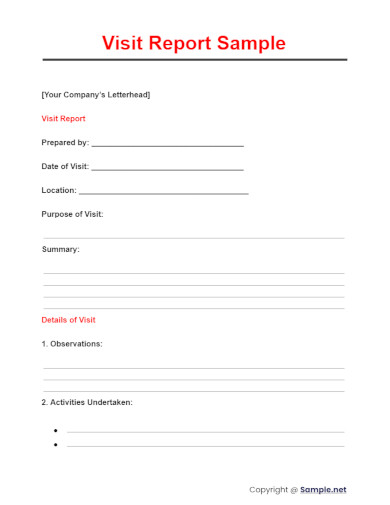
Visit Report Sample
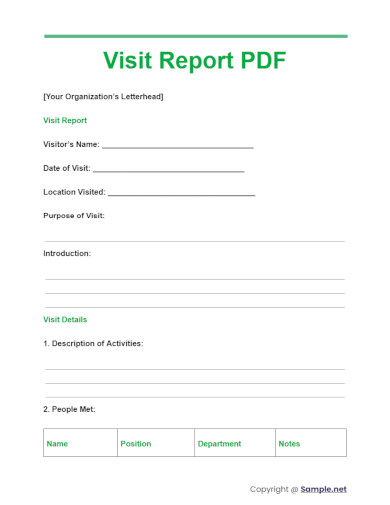
Visit Report PDF
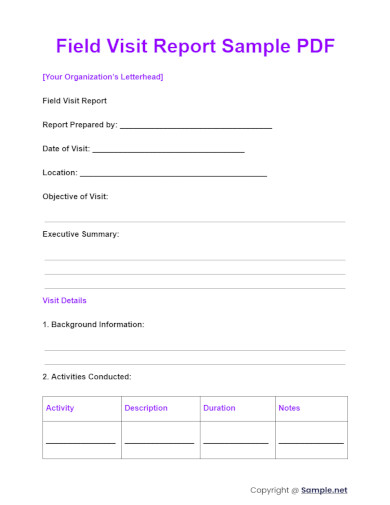

Field Visit Report Sample PDF
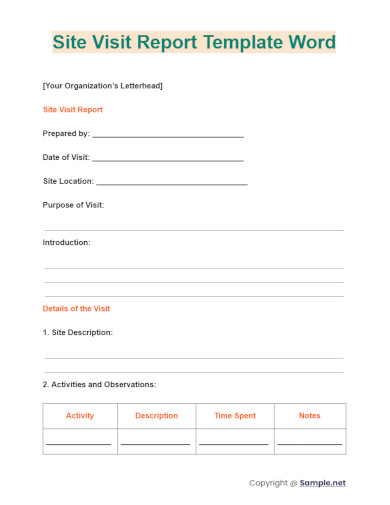
Site Visit Report Template Word

Visit Report Template

Sample School Visit Report
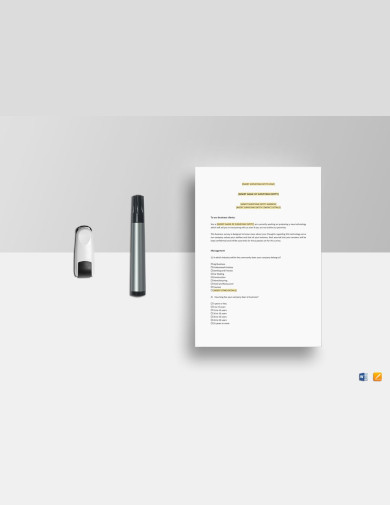
Customer Visit Report Template
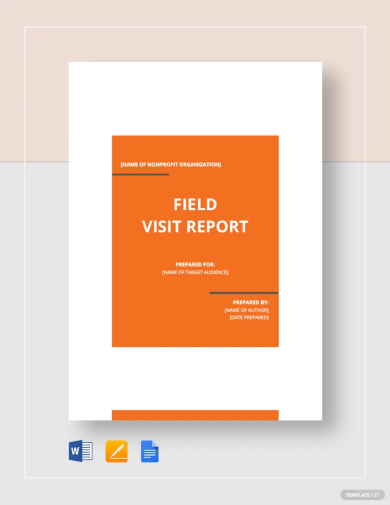
Field Visit Report
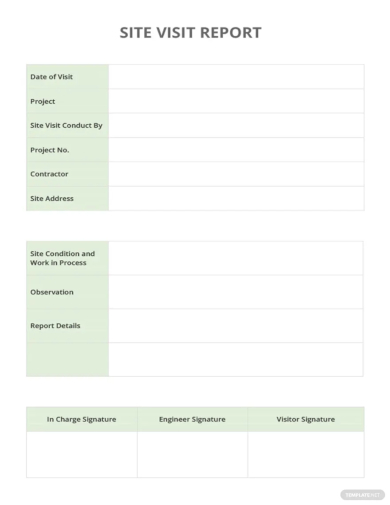
Sample Site Visit Report

Customer Visit Report Outline
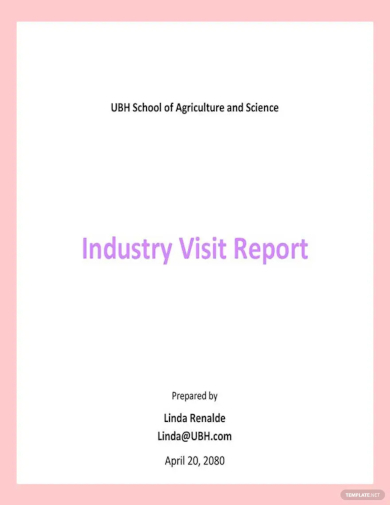
Sample Industry Visit Report
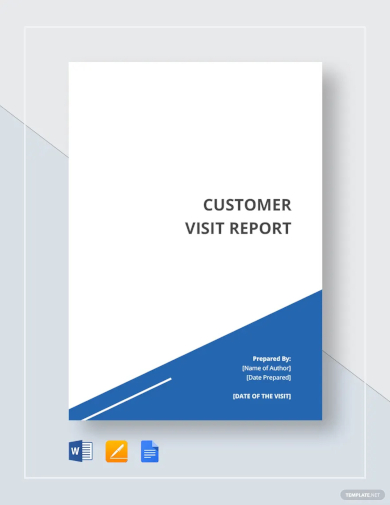
New Customer Visit Report Template
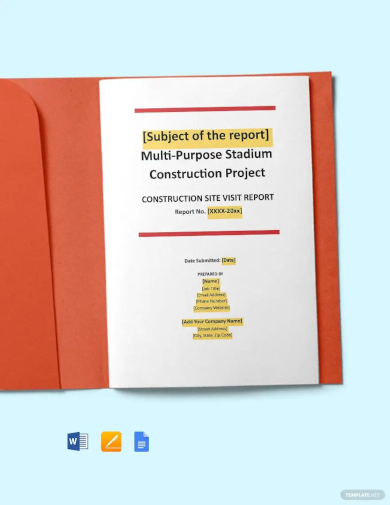
Construction Site Visit Report
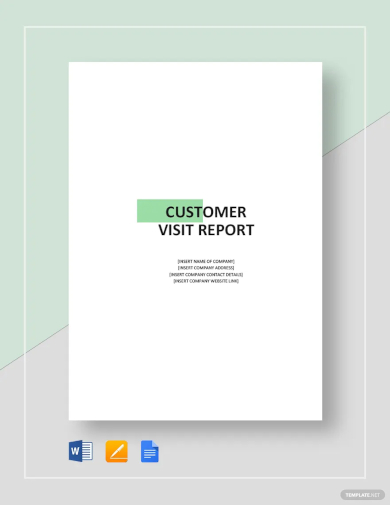
Sample Customer Visit Report

Free School Visit Report Template
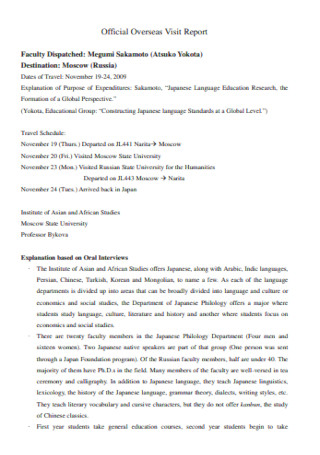
Sample Official Overseas Visit Report
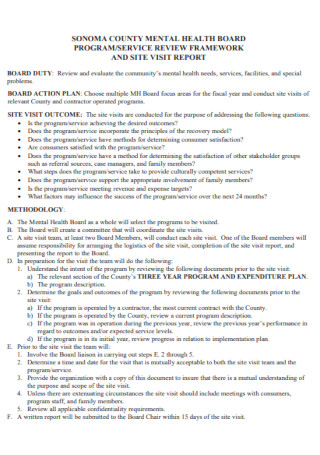
Weekly Site Visit Report
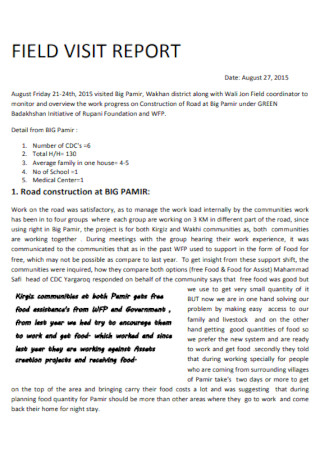
Project Field Visit Report
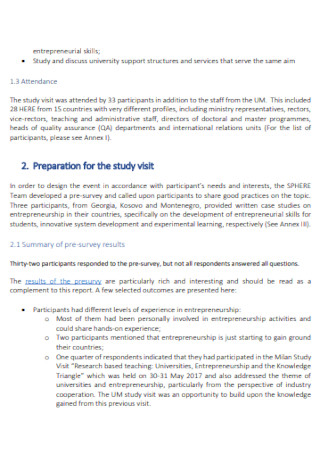
Recommendation Study Visit Report

Observation Site Visit Reports for Engineers

Simple Industrial Visit Report
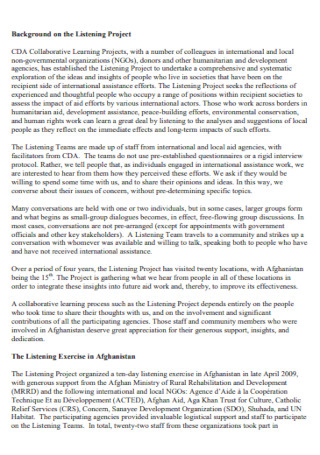
School Lab Visit Analysis Report
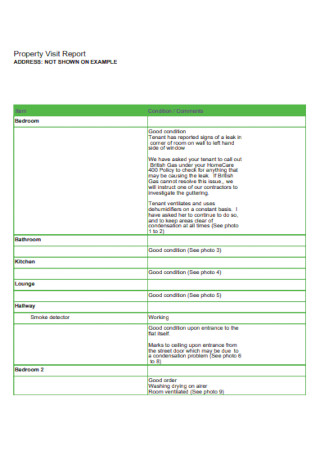
Building Construction Property Visit Report
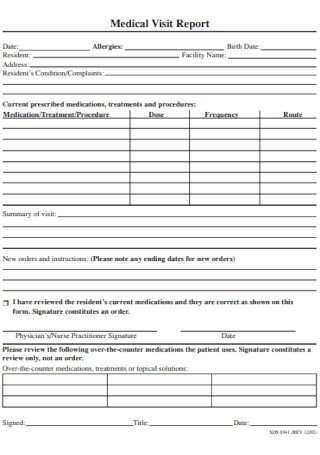
Medical College Visit Report
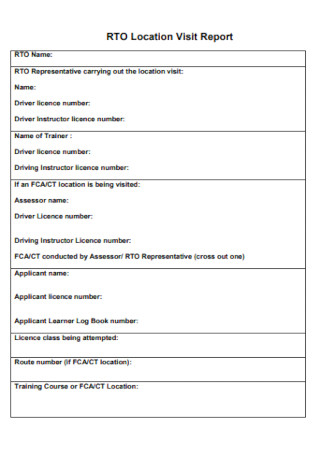
Sample Location Visit Report
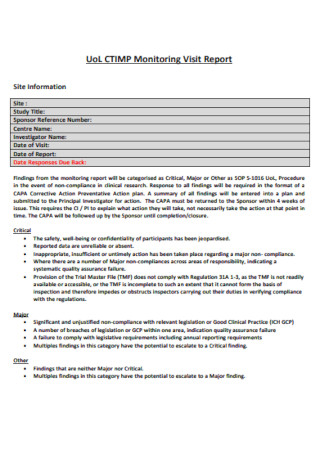
Monitoring Visit Report Summary
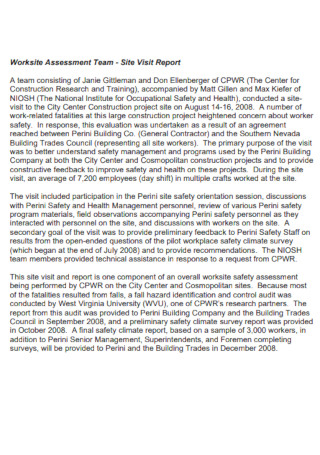
Marketing Team Site Visit Report

School Academic Visit Report Template
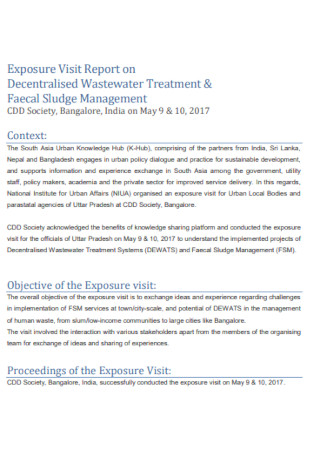
Chemical Exposure Visit Report
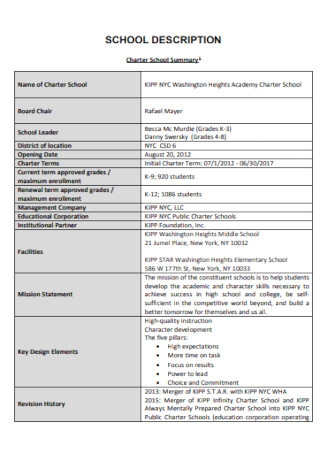
Business Renewal Site Visit Report
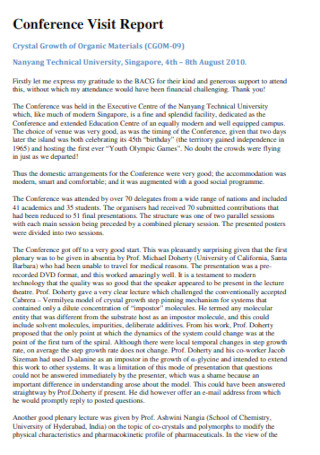
Management Conference Visit Report
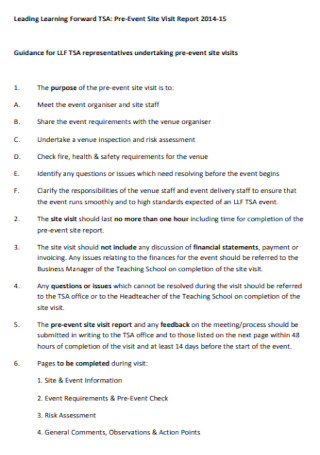
Pre-Event Site Visit Report Example in PDF
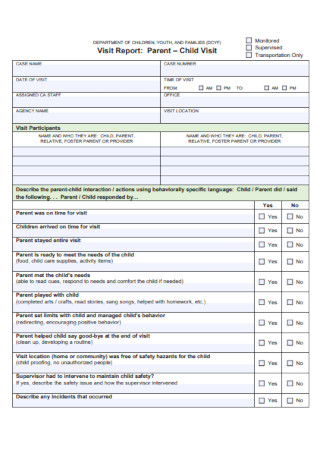
Sample Parent Visit Report Format
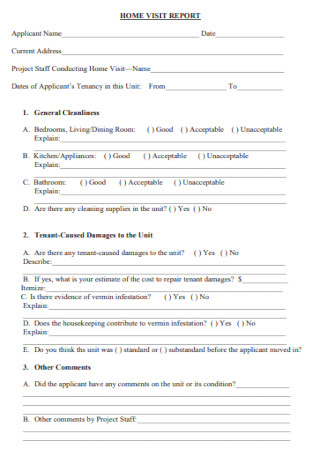
Home Tour Visit Report Template
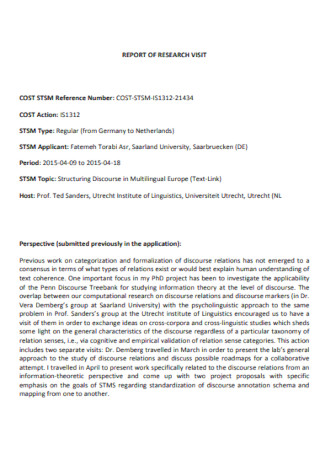
Report of Research Visit
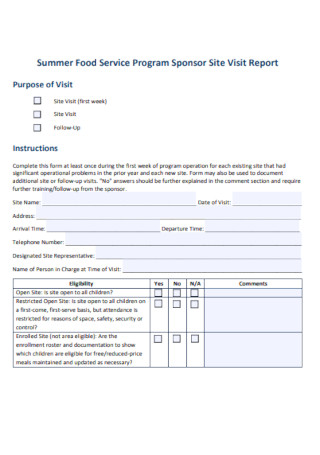
Daily Food Sponsor Visit Report Example
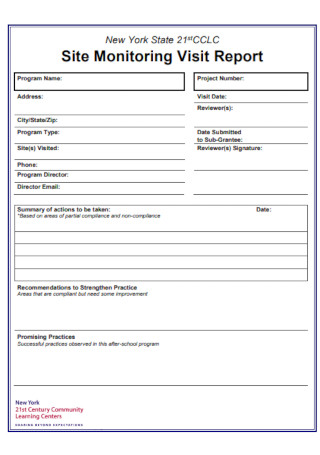
Sample Civil Site Monitoring Visit Report
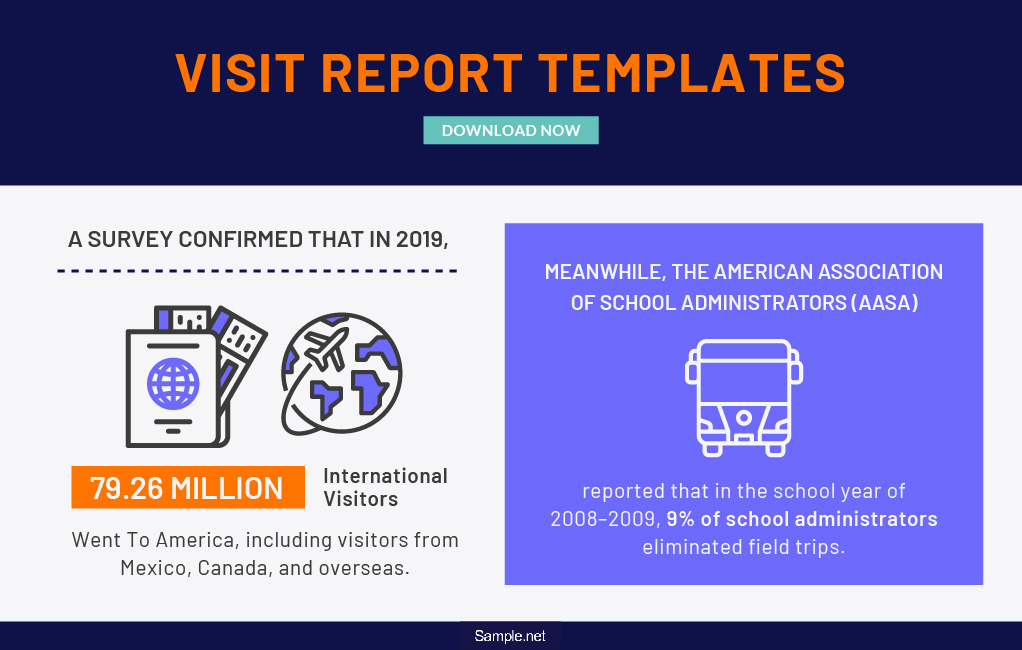
Why Are Visit Reports Important?
Step 1: determine your purpose, step 2: be observant and write what happened, step 3: reflect on your visit, step 4: download a template and insert the details, step 5: organize details according to the format.
- Site visit report
- Business visit report
- Field trip visit report
- Industrial visit report
- Monitoring visit report

- Define the Purpose: Clearly state the visit’s objectives and expected outcomes. For example, the purpose of a Training Report may include identifying partnership opportunities.
- Collect Information: Take detailed notes during the visit, and use photos or videos to supplement your observations.
- Organize Data: Categorize the information into sections such as background, observations, and analysis.
- Draft the Report: Begin with an introduction, followed by detailed observations, analysis, and end with a summary and recommendations.
- Review and Finalize: Proofread for accuracy and clarity, ensuring the report follows the planned structure and incorporates stakeholder feedback. You may also see Lab Report
- Introduction: State the purpose, date, duration, and participants involved. For instance, a Construction Site Visit Report should specify the project stage being assessed.
- Site Description: Provide a detailed description of the site, current conditions, and relevant background information.
- Observations: Offer a detailed account of activities, notable events, and any issues encountered.
- Analysis: Interpret the observations, relating them to the visit objectives and providing insights.
- Conclusion and Recommendations: Summarize key findings and provide recommendations for future actions or improvements. You may also see Technical Report
- Pre-Visit Preparation: Understand the visit’s purpose and objectives, gathering necessary information beforehand.
- Data Collection: Take comprehensive notes during the visit and use multimedia tools to document observations.
- Data Organization: Organize the collected data into coherent sections, highlighting significant observations.
- Report Drafting: Write an introduction, detailed body sections covering observations and analyses, and a conclusion with recommendations.
- Review and Finalization: Proofread for accuracy and clarity, ensuring the report meets its objectives and incorporates stakeholder feedback. You may also see Police Report
- Research: Understand the customer’s needs, preferences, and background information.
- Planning: Schedule the visit, prepare an agenda, and coordinate with relevant team members. You may also see Social Media Report
- Materials Preparation: Gather all necessary documents, presentations, and product samples.
- Team Briefing: Brief your team on the visit’s objectives, roles, and responsibilities.
- Follow-Up: Plan post-visit actions, such as sending a summary email and addressing any customer queries. This approach can be applied to a Home Visitation Report to ensure thorough preparation and follow-up.
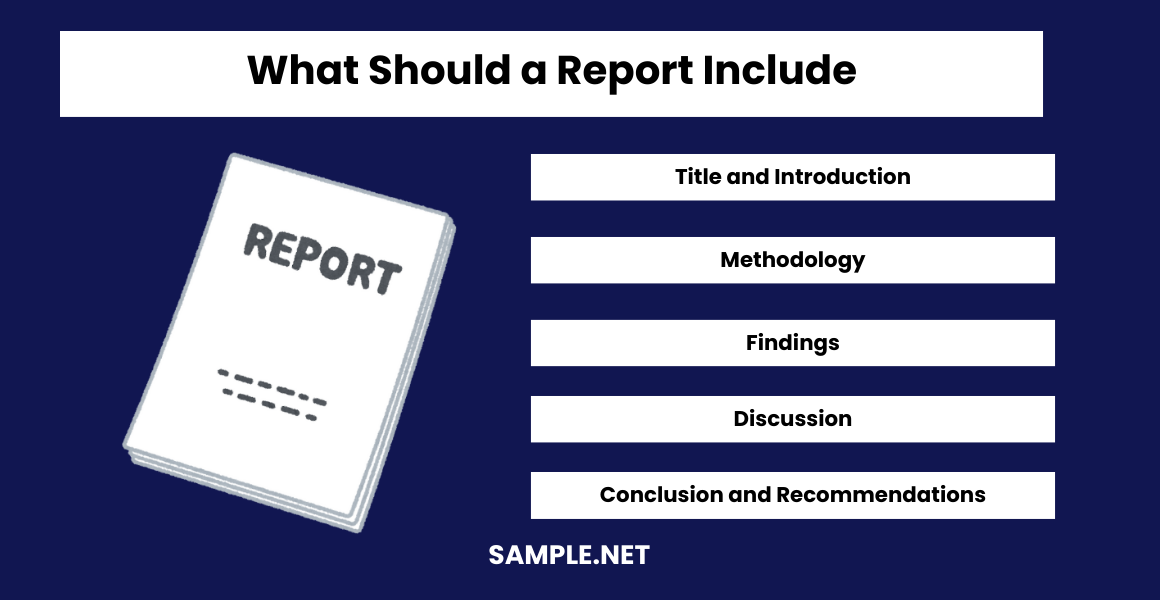
- Title and Introduction: Clearly state the report’s title and provide an overview of its purpose and scope. For example, an Internship Report should highlight the intern’s role and learning objectives.
- Methodology: Describe the methods used to collect and analyze data.
- Findings: Present detailed findings, supported by data and observations. You may also see Weather Report
- Discussion: Analyze the findings, discussing their implications and significance.
- Conclusion and Recommendations: Summarize key insights and provide actionable recommendations for future actions. This format is equally effective for a School Visit Report to convey the visit’s outcomes comprehensively.
What does the site visit report example cover?
Share this post on your network, you may also like these articles, medical report.
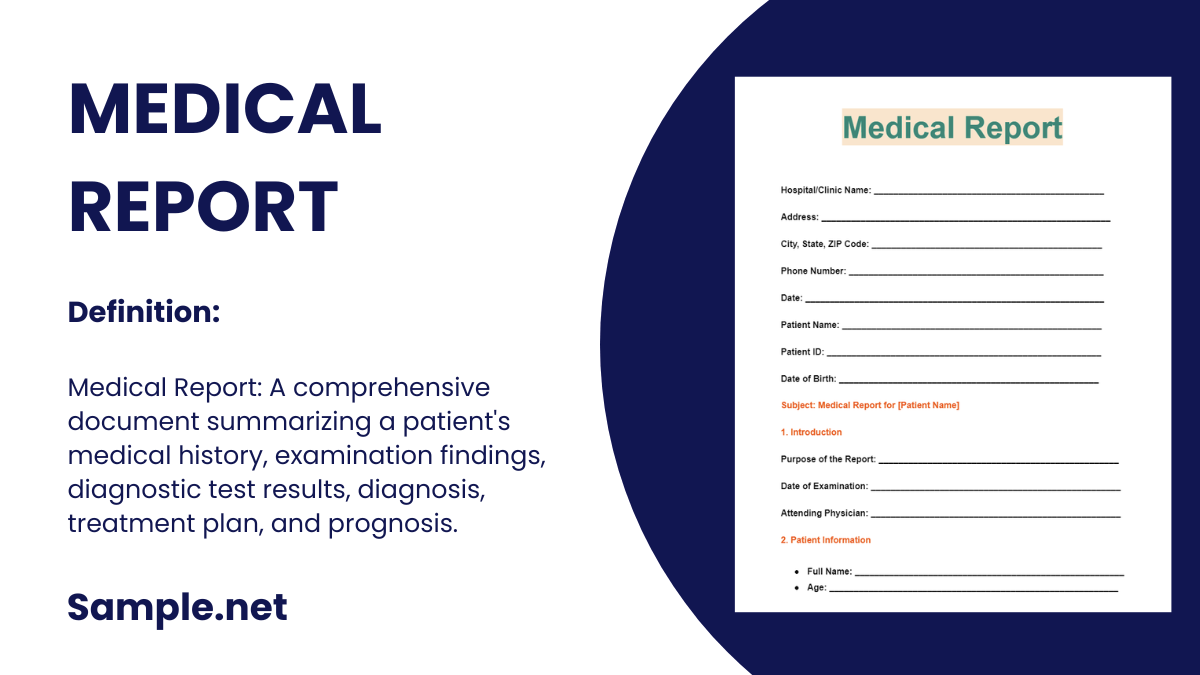
In this comprehensive guide, we will explore the essentials of creating an effective Medical Report. Whether you are a healthcare professional or need to understand how to document medical…
Training Report
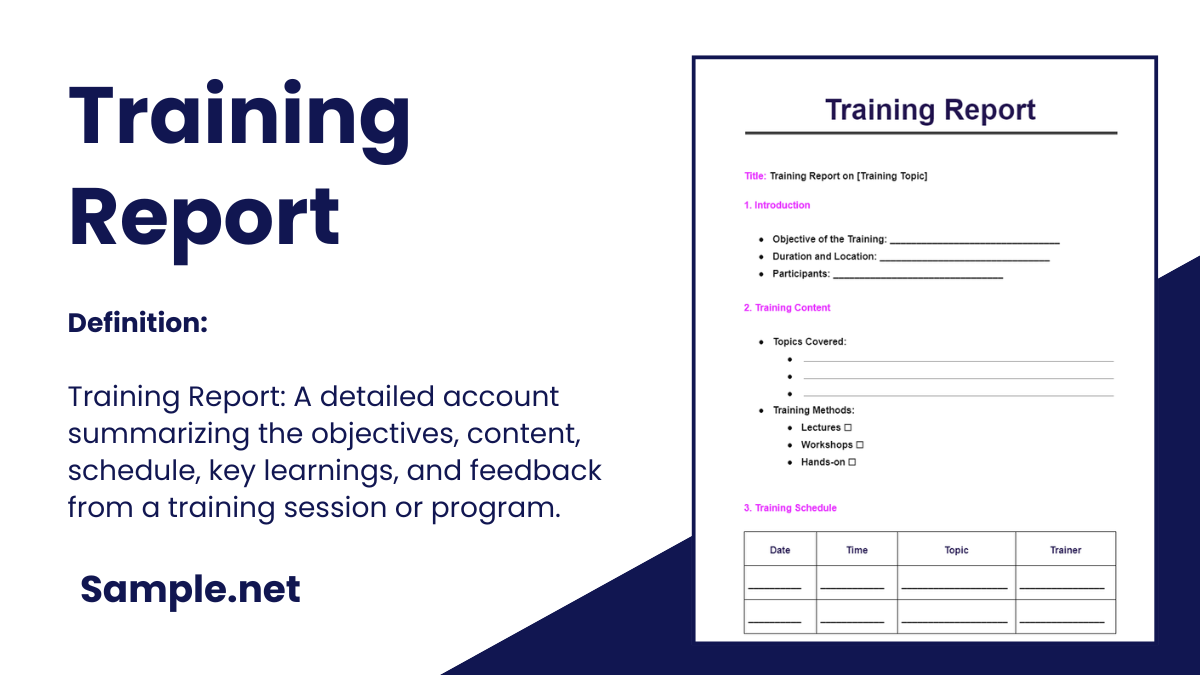
In this comprehensive guide, we will delve into the intricacies of creating an effective Training Report. Whether you are new to this process or looking to enhance your existing…
browse by categories
- Questionnaire
- Description
- Reconciliation
- Certificate
- Spreadsheet
Information
- privacy policy
- Terms & Conditions
Partner with Us
- Our Services
- Our Approach
- Indicators of School Quality
Learn about us
- Mission & Vision
- Meet the Team
- Who We Work With
- Join Our Team
Explore Resources
- Resources and Papers
- Transformative Learning Experiences
- Meet the Fellows
- Past Cohorts
How to Plan Great Learning Tours for School Designers
By Victoria Crispin, Senior Director, Springpoint
There is growing recognition that we need to do school differently. More and more, educators seek examples, ideas, and inspiration that can fuel innovative school design. At Springpoint, we help educators across the country design and launch new high school models. We’ve led hundreds of educators on learning tours across the country, which is a key lever for informing great practice and shifting mindsets.
Our latest Schools to Visit guide lists innovative school sites across the country that educators may want to learn about. Here, we’ve outlined the ways in which we help them intentionally explore exemplary learning environments and process their observations through structured debrief and planning time.
Start with Learning Outcomes As educators think about which schools to visit, a great first step is to identify a set of outcomes for the learning tour by asking a set of questions to drive the overall design and planning of the learning tour, such as:
- What aspects of practice should all participants be exposed to?
- What questions are participants hoping to investigate based on their existing practices?
- What will they concretely take away from the learning experience?
- How will they spend their time debriefing and engaging with their observations outside of the specific school visits?
From here, educators can craft a set of outcomes, which will help prioritize the ideal host sites to reach out to for a visit. Here are snapshots of sample outcomes and how they inform site and participant selection.
Example 1 – Sample outcomes : 1. Our team will learn about different approaches to primary person models through the effective use of advisory that brings positive youth development practices to life in a school. 2. Our team will understand flexible scheduling that provides opportunities for leaders to build additional time for advisory into the daily schedule. What you’d look for : Multi-grade advisory structure in a full 4-year sequence. Who should attend : Principal with a thought partner including an Assistant Principal or lead teacher, students, and anyone whose primary job will be to accelerate the inclusion of positive youth development into the school model.
Example 2 – Sample outcomes 1. Our team will learn about college and enrichment supports in an alternative school context. 2. Our team will understand innovative approaches to human capital and college access programming in schools. What you’d look for : Content teachers overseeing student case conferences and teaching college navigation courses, direct instruction of collaboration, self-advocacy, and other habits of success. Who should attend : Grade team leaders, students, student success personnel, college counselors.
Participant Selection We recommend selecting learning tour participants with the visit outcomes in mind. Based on the learning outcomes, identify team members who can best leverage the learning tour experience. Participants should also understand that the learning tour will be an opportunity for the team to both examine and bolster their own model or current set of practices. It may be worthwhile to take time at the outset to socialize the idea of adopting a learner’s stance as they visit and observe other learning environments.
On our learning tours, we ask participants to embark on school visits with open-mindedness, enthusiasm, and respect. We propose the following statements to our groups as visit norms for our time together:
- An appreciation for each other’s time away from our buildings and homes, and the commitment we’ve made to this shared experience by remaining fully present and entering each learning experience with a beginner’s mind.
- A willingness to challenge personal beliefs, perceptions, and practices, and an open and receptive attitude while doing so.
- A professional, respectful, and transparent environment in which it is safe to converse, question, and discover, and one that fosters new relationships.
- A belief that every school is a work in progress and has valuable lessons to impart.
- A common understanding of the vision, mission, goals, and expected student outcomes driving the work of your model, to best internalize observed practices that you may want to implement.
Bring Students! We always recommend that our partners include students on their design team, which means that students often attend our learning tours. Having students join these learning experiences can be a robust and enriching way to embed them even more deeply in their own school’s design process. It can connect the dots for students in tangible ways, expose them to new cities and ideas, and make them feel like an equal member in their school’s design work.

Planning the Visit Thoughtfully Our team understands how to navigate the many moving pieces of planning a trip for any group, be it an existing school team, a design team, district or charter staff, or students. Here are some tips we’ve developed as a result of our robust work in this arena:
- Assign roles. Determine which team member will be the point of contact for the host school. This person will coordinate with all parties and respond professionally and promptly to all requests and changes. They will also organize the visit logistics, including arrival and sign-in at the host school. While the school visit logistics are being honed, other team members can work on planning the debrief and related aspects of programming that will also happen during the learning tour.
- Scheduling. Identify any blackout dates for visitation, cross-checking the availability of your own team and coordinating closely with the host school to avoid holidays, testing days, trips, and other school-wide events. We have found that the optimal time of year for most schools to host visitors is early October to Thanksgiving and end of January to mid-March.
- burning questions and areas of interest
- any requests for specific policies or work products that would be helpful for your team to reference as additional context and pre-work (e.g., one-page overview of the school model, master schedule, student and staff recruitment materials, grading policies, etc.)
- any requests for specific stakeholders to hear from, for example, a STEM teacher, a mastery specialist, or students (we strongly recommend including a student panel in the agenda)
Remember to reach out to potential host schools as early as possible. Making contact four months out is safe and generous. We recommend giving one month at the very least. You’ll also want to be clear with the host school about your overall group size, as well as classroom walkthrough group size so that the visit is minimally disruptive. As we say in our Schools to Visit Guide, most smaller host schools can accommodate at least five people, while larger schools might be open to 10-15 visitors. Discuss this with your point of contact early on as it might affect the planning process.
Once you confirm a visit and a date, you might consider setting up a brief planning call with the host school leader (or their planning point person). Giving the host school a high-level sample agenda to review and react to in advance can make the planning call more efficient. This is the sample school visit template that we use when coordinating with host schools. We’ve found that these leading questions and action items help concretize the ask.
Develop an Outline for the Tour Sketching out the structure of a learning tour requires strategic planning. We work to ensure that teams are engaged in the following learning cycle: 1. Observe; 2. Make meaning; 3. Plan; 4. Receive feedback; 5. Share and implement. This cycle allows participants to develop clear understandings and positions them to act upon their insights back at their home schools. The following foundational elements of a Springpoint learning tour are designed to guide participants through this cycle:
- A welcome and framing presentation by the host school leader to open the school visit and set the context.
- Classroom observations across content areas and grade levels (if applicable). Participants can capture observations and learning with a common observation tool that has flexibility for customization. ( See a sample observation tool here ).
- Robust Q&A sessions with students and teachers.
- A thorough debrief discussion with the school leadership team.
- Structured planning time to make meaning of observations and insights from each school visit.
- A presentation segment at the end of the tour, so that participants can give and receive feedback on the action plans that have resulted from examination of the observed school model elements, and how these can live in their own school context.
We have found that dedicated blocks of planning time are crucial so that educators can digest what they see and figure out how to adapt relevant practices and systems to their own contexts.
Our learning tours generally include multiple school design teams. We use the planning time to facilitate a robust session for these teams to engage in conversation, explore key questions, work in small groups, and collaborate across teams. Each team develops a brief slide presentation showing how they will bring learnings back to their community and shift practice in their school or classroom. School teams present to the larger group and receive feedback and we help them itemize next steps toward implementation. We have found it most valuable to hold these sessions on the same day as the visit, generally in the afternoon following a morning tour. However you decide to structure the debrief and planning time, be sure to think about the structure and process well before the visit starts.
Meals, Networking, and Special Accommodations It’s important to remember that your group will need access to three meals a day, breaks to rest and check-in with their teams and at home, and snacks, water, and caffeine to sustain them through the afternoon’s debrief and planning sessions. We try to balance the number of collective meals that our groups eat together for networking and general camaraderie, with those that they can have independently so that everyone has a bit of individual time as well.
We also always ask up front whether participants have any special accommodations that we should be aware of, including food allergies, trouble with walking long distances or stairs, required proximity to a screen or audio, print size, or any other need. Our goal is to make participants as comfortable as possible while they’re with us.
Iterate the Process Our network support team thinks of every detail, planning for everything but remaining nimble based on needs and changes. We always collect participant feedback at the end of a learning tour to address our partners’ requests and ideas for future agenda and/or facilitation modification. We have run dozens of learning tours and continue to refine our approach to make sure each trip is a valuable use of educators’ precious time away from their buildings, teams, and their own families back at home.
We consistently get positive feedback from our partners on their participation in our learning tours. Cleveland Metropolitan School District leader, Darcel Williams, said: “The Springpoint network enriches our principals, who each have had the opportunity to visit schools across the country where the very design principles they are implementing are being lived out, richly.” Nancy Rosas from Internationals Network for Public Schools has said, “the school visits that Springpoint organizes for our staff expose us to innovative ideas that we can adapt and implement within our own context. These visits also energize our leaders and teachers who always return wanting to try new things they’ve seen.”
Please reach out with any questions, or if you are interested in additional resources: [email protected]
We want to hear from you!
Please reach out to learn more about our work.
Springpoint
Thank you for your interest in Springpoint! Someone from our team will respond to you shortly.
We’re sorry. Your message could not be sent at this time. Please contact us via [email protected] instead.
Get news and resources from Springpoint
Visit Report Templates
Whether for School or Business, Ensure You Get the Right Observation and Information with Template.net’s Free Visit Report Templates. Documenting Your Visit for School Trips, Projects, or Business for Marketing Helps Document Every Detail. Have Perfect Template Sample Formats for That from Us for Daily Summary Reports and More!
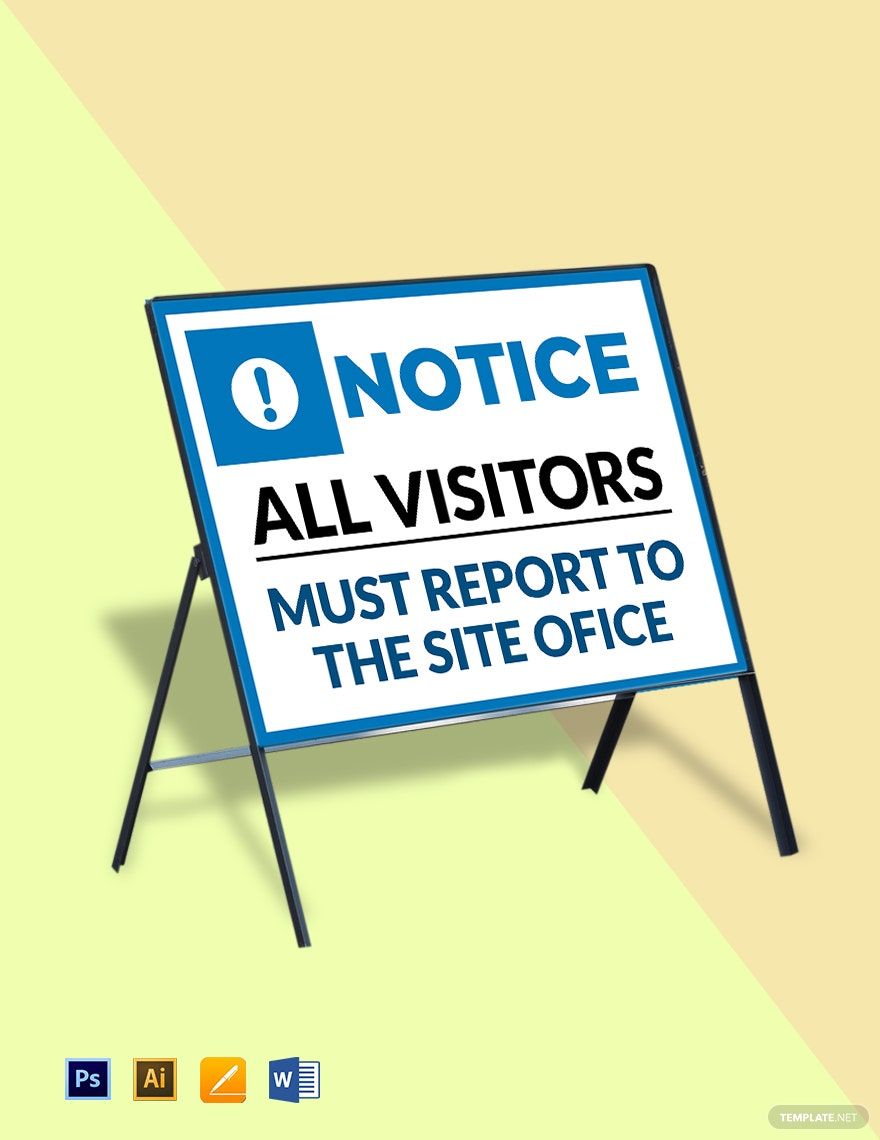
- Visit Report
- Visitor ID Card
Some jobs require personnel to visit fields and sites, and if you happen to have this kind of job, then writing a visit report is a very important role. When on-site, pay attention to details because you will write your visit report afterward. To make your visit report writing easy, you can download our templates. In Template.net pro we offer various templates that suit your needs. We offer 100% customizable report templates that are easy to use. These templates are beautifully designed, professionally written, easily editable, and printable. Don't hesitate to join any of our subscription plans to enjoy many benefits.
What Is a Visit Report?
A visit report is also known as a field report, narrates in detail the visit of a certain person or a group to a site. The visit report could be done by the site manager, the owner or whoever conducts site or field visits. The observation and activity report will serve as a documentation of the status of the site especially those that are most noticeable. That's why it is very important to be very kind of observing sites when conducting site visits.
How to Make a Visit Report
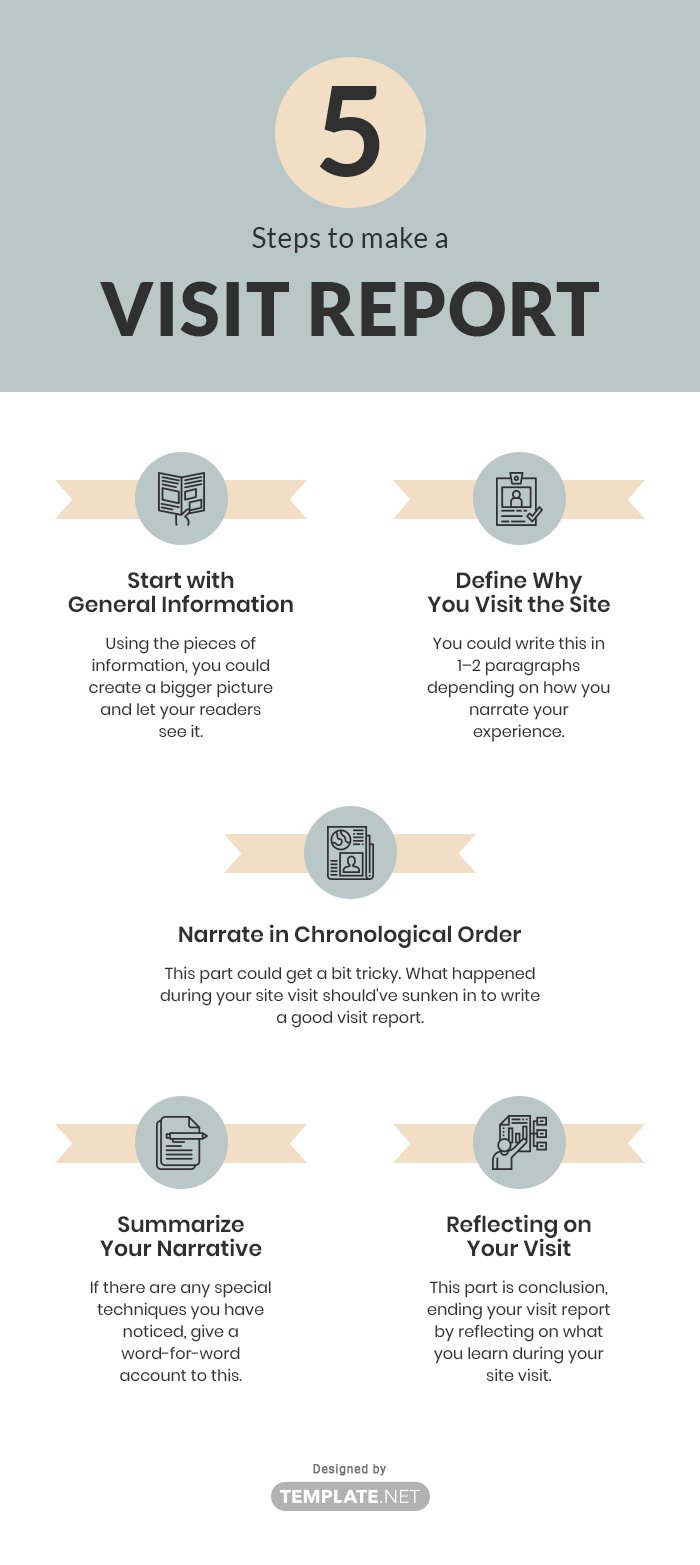
It is understandable that making a visit report could be a dragging task and making a narrative seems hard and intimidating. Just keep in mind once you are on a site visit be very observant of what's going on around you. For example, you would be writing the status report of the site that you are visiting so be mindful of the progress on the site. To successfully narrate your visit report, here are some tips you could follow. Simply go over to the steps and make your visit report writing easier.
1. Start with General Information
You could begin your report with general information. Using these pieces of information, you could create a bigger picture and let your readers see it. You could tell your audience when you visited the site, where the location of the site is, and who your contact on the site was. Also, how you arrived on the site could be a good introduction especially if it requires extensive travel and trip reports .
2. Define Why You Visit the Site
This part of your report outline could be a little bit longer than your introduction. You could write this in one to two paragraphs depending on how you narrate your experience. Also, write down what type of site you visited. Let your readers see what you saw on the site. For example, if you visited a school, tell your audience how you got there. If you rode a bus, let them picture it out through your words.
3. Narrate in Chronological Order
This part could get a bit tricky. What happened during your site visit should've sunken in to write a good visit report. Arrange what happened in chronological order so your readers won't get confused. Start from the beginning. You could include who you met, what you did, what happened on the site. Bring your readers with you.
4. Summarize Your Narrative
As much as possible, write down in detail the processes that you observed on the site. If there are any special techniques you have noticed, give a word-for-word account to this. You could also include the issues or problems the site is facing during your visit and how they address these issues in particular. Document as many as you can and organize them very well.
5. Reflecting on Your Visit
This part is your conclusion, ending your work visit report by reflecting on what you learn during your site visit. Make a connection to what you saw at the site and explain it in a reflective essay.
Get Access to World's largest Template Library & Tools
- Access to 1 Million+ Templates & Tools
- Unlimited access to Design & Documents AI editors
- Professionally Made Content and Beautifully Designed
- Instant Download & 100% Customizable
Making The Most of Your College Visit: A Comprehensive Guide For Prospective Students and Families

Embarking on a college visit is a pivotal step in your higher education journey. It’s not just about seeing the campus; it’s about immersing yourself in the environment, understanding the community, and gathering the information you need to make an informed decision. Here’s how you can make the most of your college visit.
Plan To Visit Early and When Students Are On Campus
You can usually visit a college campus at any time of year. However, to get an authentic feel of college life, plan your visit when classes are in session and students are on campus; often from September through May.
Many students prefer to visit colleges early to ensure they experience the campus with other students present. This will give you a true sense of the daily buzz, how students interact, and what the campus atmosphere is like. It’s best to avoid holiday breaks and exam periods, as these times may not reflect the usual campus environment.
Schedule A Campus Tour With The Office of Admissions
Hey future college stars! As you embark on your journey to find the perfect campus, one of the best starting points is scheduling a campus tour through the Office of Admissions. Trust me, these tours are golden! They’re often led by current students who can dish out the real scoop on college life.
Booking a tour is like securing a VIP pass. You’ll have a dedicated guide to show you around, spill the beans on all the cool spots, and answer your burning questions. Plus, touring with a group means you’ll catch those brilliant questions from fellow prospective students that you might not have thought to ask yourself. It’s like a bonus round of knowledge!
Now, if you happen to show up without an appointment, most schools will still hook you up with a tour. But here’s the catch—you might have to wait a bit for a guide to free up. And let’s be real, ain’t nobody got time for that! Scheduled tours are where the magic happens. You get personal stories, insider tips on navigating campus life, and the lowdown on everything from academics to social life to the best campus resources.
So, get that tour booked and dive into your future college adventure. It’s more than just a walk around campus; it’s your sneak peek into the next epic chapter of your life!
Meet With The Office of Financial Aid
Understanding the financial aspect of your college education is crucial. Ideally, schedule a meeting with the Office of Financial Aid prior to your visit. During your visit, staff can explain their awarding process, important timelines, and typical financial aid packages. If possible, try to meet your potential Financial Aid Counselor. Establishing this connection can be beneficial for future financial aid appeals or inquiries. Knowing the person handling your financial aid can make the process smoother and more personalized.
For Student-Athletes: Connect With The Coaching Staff
If you’re a student-athlete visiting a college, the approach to meeting with the coaching staff and visiting the athletic facilities varies depending on whether you are being recruited or are interested in joining a team.
For recruited athletes:
- Arrange to meet with the coaching staff and visit the athletic facilities. This will give you a sense of the resources available to you and the culture of the athletic department.
- Speak with current student-athletes to gain valuable insights into balancing academics and sports, team dynamics, and the support system in place for athletes.
- Discuss possible institutional scholarship funding for athletes with the coaching staff to understand what financial support may be available to you.
For non-recruited athletes interested in joining a team:
- Schedule a visit with the athletic department to tour the facilities and meet with the coaching staff if possible. This can help you understand the resources and support available.
- Talk to current student-athletes to learn about their experiences and how they balance academics with sports, team dynamics, and the overall athletic culture.
- Inquire about walk-on opportunities, tryouts, and any potential institutional scholarship funding for athletes, to see what financial and academic support options might be available.
Whether you are being recruited or not, these steps will help you make an informed decision about joining the team and pursuing your athletic career at the college.
Sample The On-Campus Food
Ready to dive into the delicious world of campus dining? Buckle up because your college life is about to get a whole lot tastier!
Picture this: you’re settling into dorm life, and one of the most exciting adventures awaits you at the dining hall. It’s not just about refueling—it’s a journey of culinary exploration! From savory to sweet, vegan to carnivore, there’s a buffet of flavors waiting to be discovered.
Swing by the dining facilities, grab a plate, and indulge in the smorgasbord of options. Dive into the cheesy pizzas, savor the made-to-order stir-fries, and don’t forget to scope out the salad bar for your daily greens. It’s not just about filling your belly; it’s about finding your foodie soulmate!
Got dietary preferences or allergies? No problemo! Most places offer a range of choices to suit every taste bud and dietary need. Whether you’re gluten-free, veggie-curious, or a die-hard meat lover, there’s something scrumptious with your name on it.
So, fellow food enthusiasts, embrace the delicious journey ahead. Explore, taste, and savor every bite. Your campus dining experience isn’t just about meals—it’s about creating flavorful memories that will fuel your college adventures!
Explore Off-Campus Areas
Hey there, future scholars and current campus adventurers! So, you’re thinking of making the leap to off-campus living—awesome choice! But before you settle into your new digs, why not embark on a mini-exploration adventure?
Hop on your trusty bike or take a stroll to uncover the hidden gems around your new college town. From the best burrito joints to that cozy indie bookstore, and even the local hangouts where everyone knows your name (well, soon they will!), diving into the neighborhood scene is like unlocking a secret level in the game of college life.
Why does it matter? Well, beyond scoring the perfect slice of pizza, getting to know your stomping grounds sets you up for success. You’ll feel more rooted, more in tune with your surroundings. Plus, you’ll be the first to know about that quirky café that hosts open mic nights or the farmers’ market that’s just a bike ride away.
So, grab your phone and start plotting your path to off-campus enlightenment. Whether you’re stocking up on dorm room snacks or planning your next study break, knowing your local haunts will make you feel like a true local in no time. Happy exploring!
Additional Tips For A Successful College Visit
Prepare Questions : Before your visit, make a list of questions you want to ask students, tour guides, admissions officers, and financial aid counselors. This ensures you gather all the information you need.
Some good questions to consider might be:
- What do students do for fun on weekends?
- Are there any popular clubs or organizations that you recommend joining?
- How easy is it to get help from professors if you need it?
- What’s the food like on campus? Are there diverse dining options?
- Can you tell me about the campus safety measures in place?
- How accessible are the campus facilities, like the gym and library?
- What kind of support does the university offer for career planning and job placements?
- Are there opportunities for internships or research within my field of interest?
- How does the school support students’ mental health and well-being?
- What are the housing options like, and how does the roommate selection process work?
Take Notes and Photos : Document your visit with notes and photos. This will help you remember details and compare different campuses after multiple visits.
Attend A Class : If possible, sit in on a class to get a sense of the academic environment and teaching style.
Stay Overnight : Some colleges offer overnight programs where prospective students can stay in a dorm with a current student. This can provide a deeper understanding of campus life. In fact, some universities will even reimburse you for travel expenses involved with your visit if you become a student at their college.
Visiting a college is more than just seeing the buildings; it’s about feeling the vibe, understanding the community, and envisioning yourself there. By planning ahead and engaging with different aspects of the campus, you can make the most of your visit and gain the insights needed to make a well-informed decision about your future college home.
Disclaimer: This blog post provides personal finance educational information, and it is not intended to provide legal, financial, or tax advice.
- Recent Posts
- Smart Tips for Using Your Financial Aid Over the Summer - July 5, 2024
- Making The Most of Your College Visit: A Comprehensive Guide For Prospective Students and Families - July 2, 2024
- Understanding The Federal Pell Grant: A Key Resource For College Students - June 27, 2024
Ready to find scholarships that are a match for you?

IMAGES
VIDEO
COMMENTS
Contact the school. Most schools conduct regular school tours and open houses during the enrollment season — typically in the fall. Call the school or go online to schedule a visit. Ask and observe. Jot down your questions before your visit (the sample questions below will help you create your list). Key questions to ask
When you meet the purpose of the visit then, you write about the things that you find out from the visit to the school. The need to visit the school is for the welfare and betterment of the schools. The purpose of the visits must be clear in the report format. Step 4: Add what happened during the visit. Then, you must add the things that are ...
1. Add a title page to the beginning of your report. The title should be the name of the visit and site, such as "Visit to Airplane Factory" or "Corporate Headquarters Visit Report." Under the title, include your name, your institution, and the date of the visit. Do not put any other information on this page.
A School Visit Report is a comprehensive document that outlines the observations, findings, and sample recommendations resulting from a visit to an educational institution. This report is typically generated by individuals, such as education officials, inspectors, or administrators, who conduct on-site visits to schools.
Jargon-Free Language: In writing a school visit report, whether you are writing a government school visit report or a special school visit report, you must remember to avoid jargon.Use natural language in writing. You must not confuse your audience with technical terms. Your report will be more comely if you will use a language that can be understood by anybody.
Sample School Visit Template Time Description Start Time: Arrival Be sure to troubleshoot arrival and sign-in for your group before the visit; some schools may require you to present IDs to be scanned, etc. and you'll want to know how much time this process will take in order to plan the agenda accordingly. (30 min)
If you have more time (a few hours) to visit a school, below are detailed questions you may want to consider asking administrators, teachers, or parents at the school. These questions are split into five important categories of school quality: 1. Academic Learning 2. Teachers and the Teaching Environment
SAIS has launched a revised format for visit reports, which is intended to serve the needs of the school in receiving high-level commendations and recommendations that align with the vision of the school and its current strategic initiatives. The sections of the visit report previously called profile, vision, plan, results, additional, and
School visit agendas should maximize this kind of meeting time, offering participants multiple opportunities to engage with the principal (usually at the start and end of the tour), to hear from teachers (through classroom visits, panel discussions, or sitting in on teacher planning meetings), and to interact with students (through guided tours ...
1. Build clarity around the purpose of the visit, among your critical friends and among colleagues, parents, and students in your school. What questions do we have and how will a visit help uncover them? What evidence will we ask our critical friends to look for or examine, to enable them to provide relevant feedback?
This framework describes the preparation, visit activities, and follow-up that promote meaningful and effective school visits. 1. Establish expectations. 2. Review artifacts and develop visit focus. 3. Establish time, agenda, and preparation required. 4. Observe with a specific focus.
Assistive technology is available for learning needs. The school scores well on standardized tests. The school has a library, a music and arts program, and a computer lab. Children do well in middle school after they leave this school. Use this elementary school checklist as you consider which grade school is right for your child with learning ...
10 Must-Haves in Your School Visit Contract. Whether you have a formal school visit contract, a letter of agreement or terms worked out through email, when booking an appearance, here are some main items you should address, in writing, with your host: Date (s) of event. Honorarium: Specify how much you will be paid and when the payment is due.
This format is equally effective for a School Visit Report to convey the visit's outcomes comprehensively. What does the site visit report example cover? A site visit report example covers the purpose of the visit, observations, analysis, and recommendations. It includes details relevant to the visit, much like a Daily Report
This is the sample school visit template that we use when coordinating with host schools. We've found that these leading questions and action items help concretize the ask. Develop an Outline for the Tour Sketching out the structure of a learning tour requires strategic planning. We work to ensure that teams are engaged in the following ...
Easily Editable, Printable, Downloadable. Save time when writing your report on a School Visit whether it is by a group of students or parents by using our Editable School Visit Report Template. Our Template has original suggestive Content which you can change using our Online Editor Tool. Download the Document in your preferred File format.
In practice: example visit format from a school. The vice-chair of governors at Kaizen Primary School in London's Newham went on a visit to monitor reading, with a particular focus on a reciprocal reading initiative that the school was trialling.. The visit lasted an hour and included: A welcome from 2 of the school's senior leaders, including a discussion of the initiative and its context ...
This checklist provides a summary of the main impressions we think you will want to take away from a school visit. Many of the questions will be covered as you tour the school. Some will require you to ask if the Tour leader does not provide the information. Some questions may not be relevant to you.
Whether for School or Business, Ensure You Get the Right Observation and Information with Template.net's Free Visit Report Templates. Documenting Your Visit for School Trips, Projects, or Business for Marketing Helps Document Every Detail. Have Perfect Template Sample Formats for That from Us for Daily Summary Reports and More!
Excluding other members of the family from the visit. Talking about families in public. Being the center of attention. 6. Project Appleseed: The National Campaign For School Improvement. Project Appleseed is actually an entire model (with paid training but also free tips and resources) for school home visits.
Governor school visits: a chair's guide and template schedule. Use our guide to help plan and prepare for governor school visits. Understand how you can link visits to the school improvement plan, and how you can help your governors prepare and report back effectively. Last reviewed on 20 March 2024. School types: All • School phases: All ...
Talk to your school contact about coordinating sales with a local bookstore. Sometimes the store will provide credits or discounts for the school library based on the number of books sold. Be yourself! Think of a school visit like a picture book, with a beginning, middle, and end. You are the main character. Wear something snazzy. Smile.
Write three to four sentences that include the following: your name. where you are from. what grade you are in. that you will be applying to the university. what your primary academic interests are. what day you will be visiting. Follow those sentences with your request. This should be detailed and specific.
Plan To Visit Early and When Students Are On Campus. You can usually visit a college campus at any time of year. However, to get an authentic feel of college life, plan your visit when classes are in session and students are on campus; often from September through May. ... Now, if you happen to show up without an appointment, most schools will ...
Find full-length practice tests on Bluebook™ as well as downloadable paper (nonadaptive) practice tests to help you prepare for the SAT, PSAT/NMSQT, PSAT 10, and PSAT 8/9.